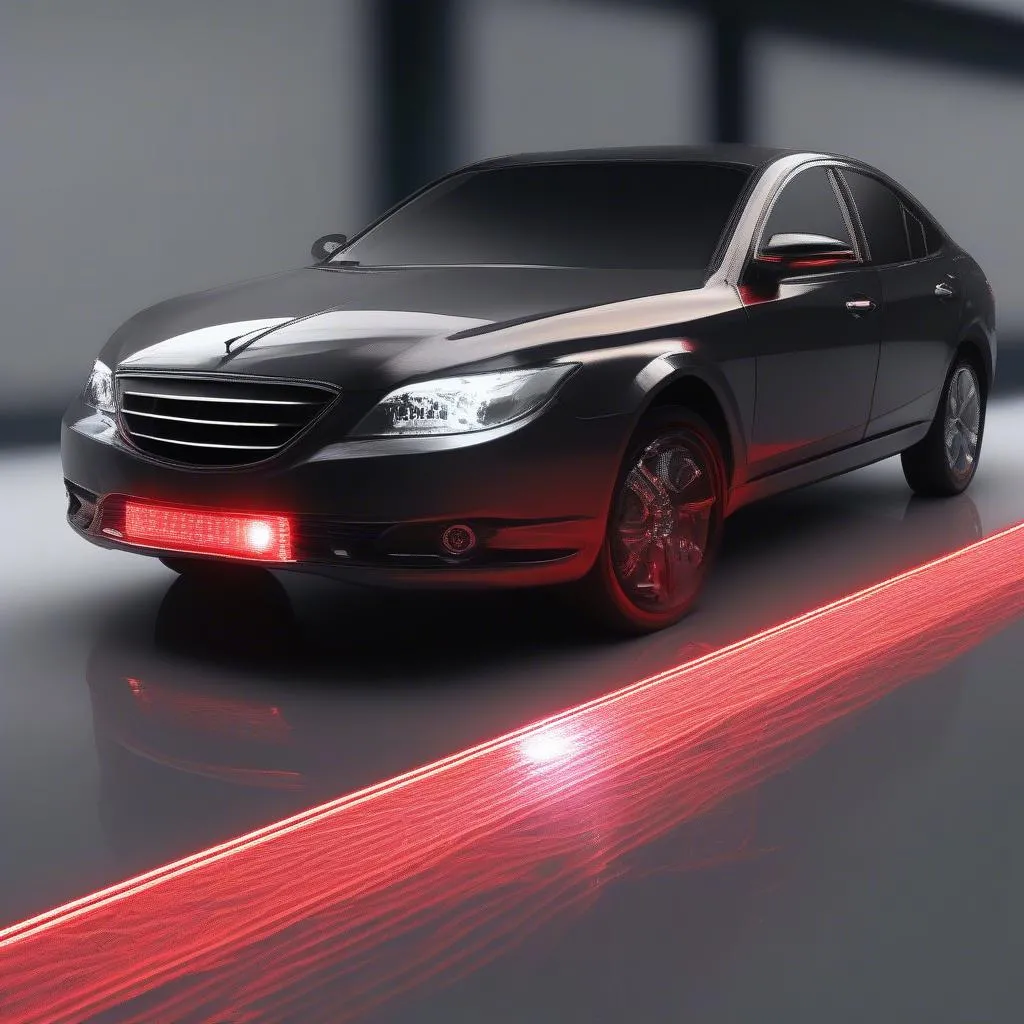A wireless in-car Bluetooth FM transmitter radio adapter is a small device that allows you to stream audio from your smartphone or other Bluetooth-enabled device to your car’s radio. It works by transmitting an FM signal that your car radio can pick up. This simple device can significantly upgrade your driving experience, especially in older vehicles lacking integrated Bluetooth. Let’s delve deeper into how these handy gadgets work and how to choose the right one for your needs.
Understanding the Wireless Bluetooth FM Transmitter
These compact devices bring wireless audio streaming to virtually any car, offering a convenient alternative to complicated and expensive car stereo upgrades. They bridge the gap between modern technology and older audio systems, providing a seamless listening experience. The bluetooth fm car radio functionality they provide is simple yet effective.
How Does a Wireless In-Car Bluetooth FM Transmitter Work?
The adapter plugs into your car’s 12V power outlet (cigarette lighter) and transmits an FM radio signal. You tune your car radio to the same frequency as the transmitter, effectively creating a private channel for your audio. Your phone, paired via Bluetooth with the wireless in-car Bluetooth FM transmitter radio adapter, then streams music, podcasts, or even GPS directions through your car speakers.
Choosing the Right Wireless In-Car Bluetooth FM Transmitter Radio Adapter
With various models available, selecting the perfect wireless in-car Bluetooth FM transmitter radio adapter requires careful consideration.
Key Features to Consider
- Sound Quality: Prioritize adapters with noise reduction and clear audio transmission.
- Ease of Use: Look for intuitive controls and simple pairing processes.
- Display: A clear display showing the FM frequency and other information is beneficial.
- Additional Features: Some adapters offer hands-free calling, USB charging ports, and voice assistant compatibility.
“A high-quality wireless in-car Bluetooth FM transmitter radio adapter can drastically improve your driving experience,” says John Miller, Senior Automotive Electronics Technician at AutoTech Solutions. “It’s a cost-effective solution that delivers modern functionality without requiring a complete stereo overhaul.”
Optimizing Your Wireless In-Car Bluetooth FM Transmitter Radio Adapter
Finding the best frequency is crucial for clear audio. Experiment with different frequencies on your car radio, especially ones with less static. Avoid frequencies used by strong local radio stations.
Troubleshooting Common Issues
- Static or Interference: Try a different FM frequency or relocate the transmitter within your car.
- Poor Sound Quality: Ensure your phone’s volume and the transmitter’s volume are adjusted correctly.
- Connection Problems: Check your Bluetooth connection and ensure the devices are paired properly.
You might also consider exploring other bluetooth car radio interface options. If you are looking for ways to connect wirelessly without using the radio, consider exploring wireless car bluetooth without using radio.
Conclusion
A wireless in-car Bluetooth FM transmitter radio adapter is a simple, affordable way to upgrade your car’s audio system. By understanding its functionality and choosing the right model for your needs, you can enjoy a seamless wireless audio experience on the road. This convenient device provides an excellent solution for bringing modern technology to older vehicles.
“Don’t let an outdated car stereo limit your listening options,” advises Maria Sanchez, Lead Diagnostics Engineer at Car Audio Innovations. “A wireless in-car Bluetooth FM transmitter radio adapter provides a practical and cost-effective solution for enjoying your favorite audio content while driving.” Remember to check out our guide on a bluetooth receiver for oem car radio honda ridgeline for specific solutions. If you’re looking for a battery for f150 key fob, we have a guide for that as well.

